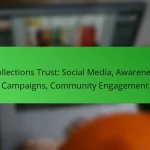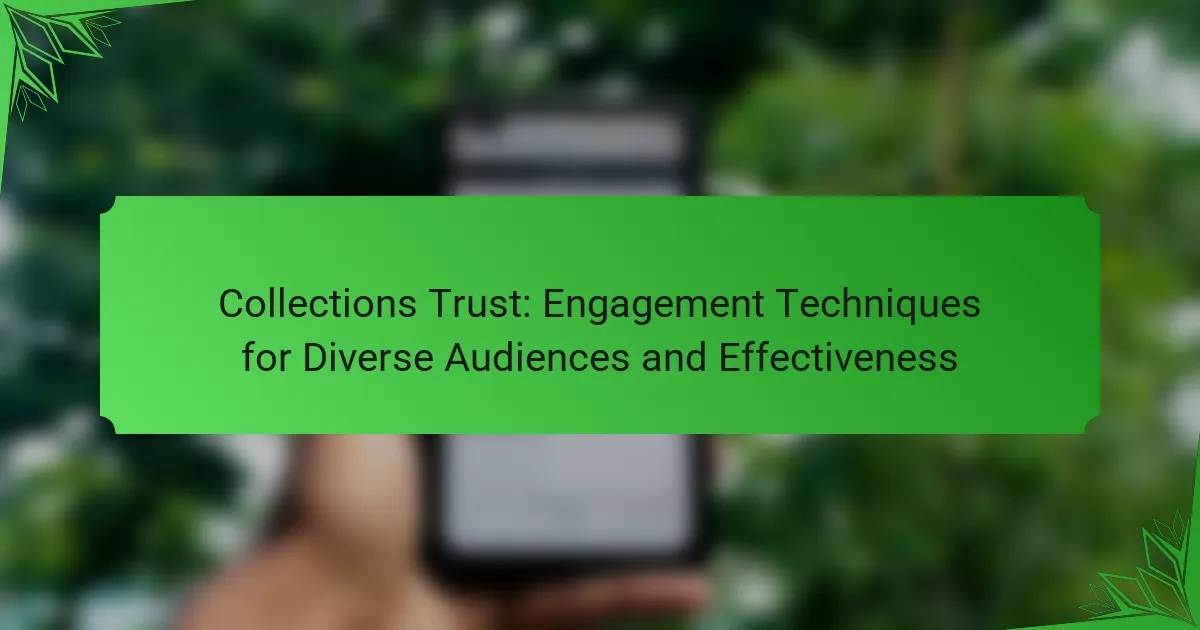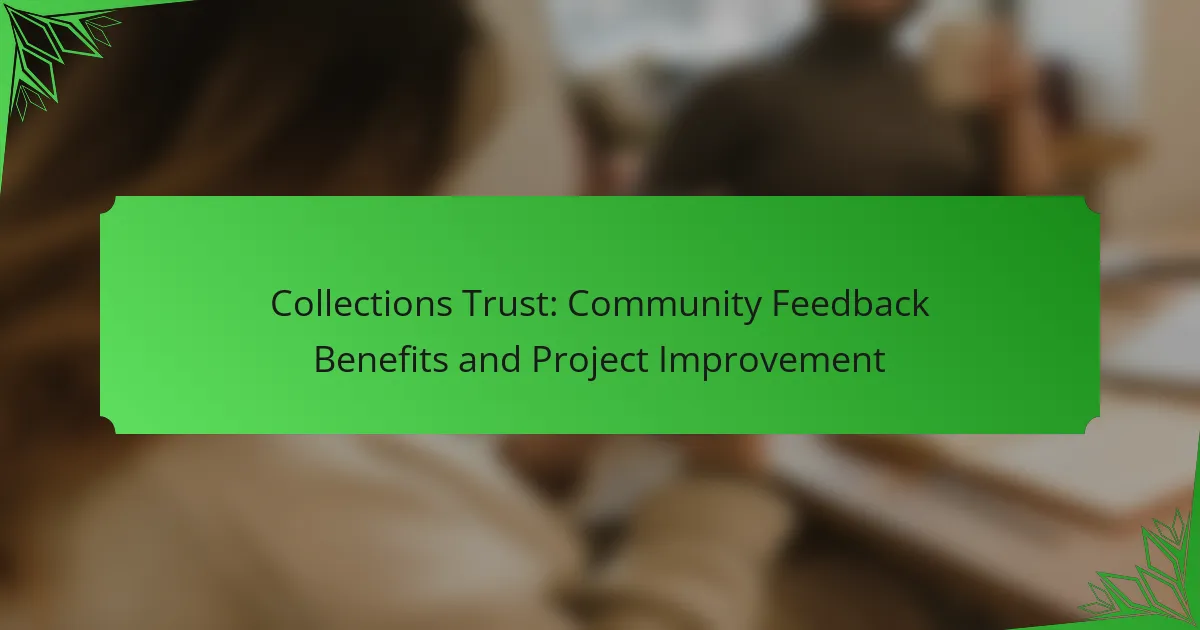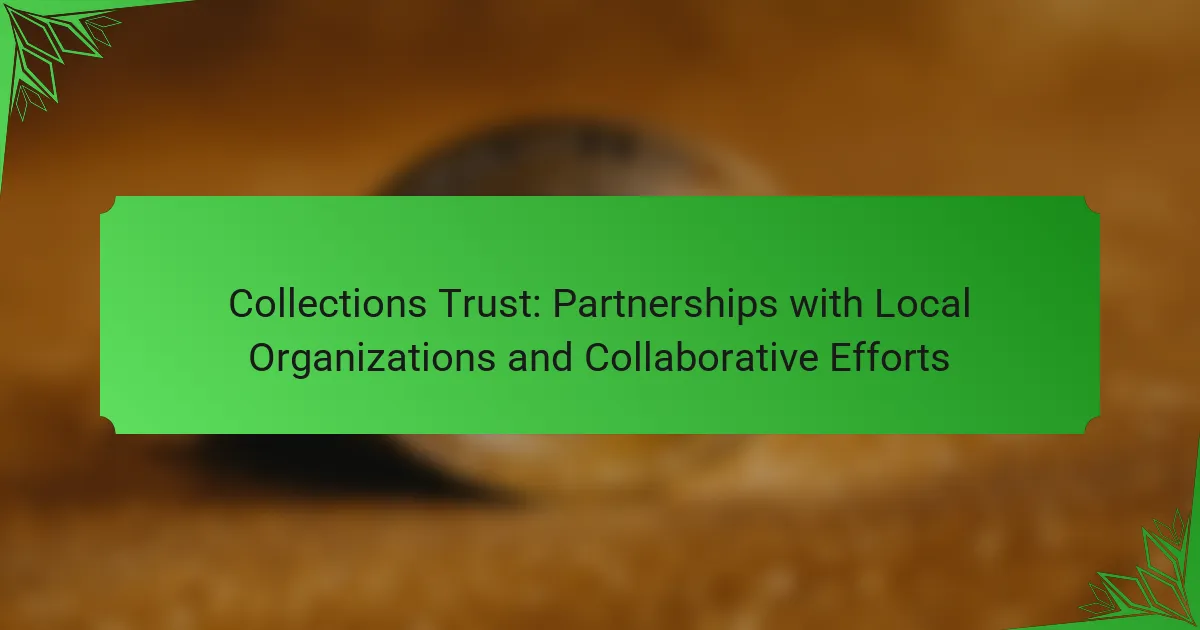Engaging diverse audiences with collections requires innovative techniques such as interactive workshops, community outreach, and digital storytelling. By fostering trust and transparency, organizations can enhance connections to local heritage, creating a sense of ownership among community members. Measuring the effectiveness of these engagement strategies involves gathering feedback and analyzing participation metrics to ensure meaningful interactions.
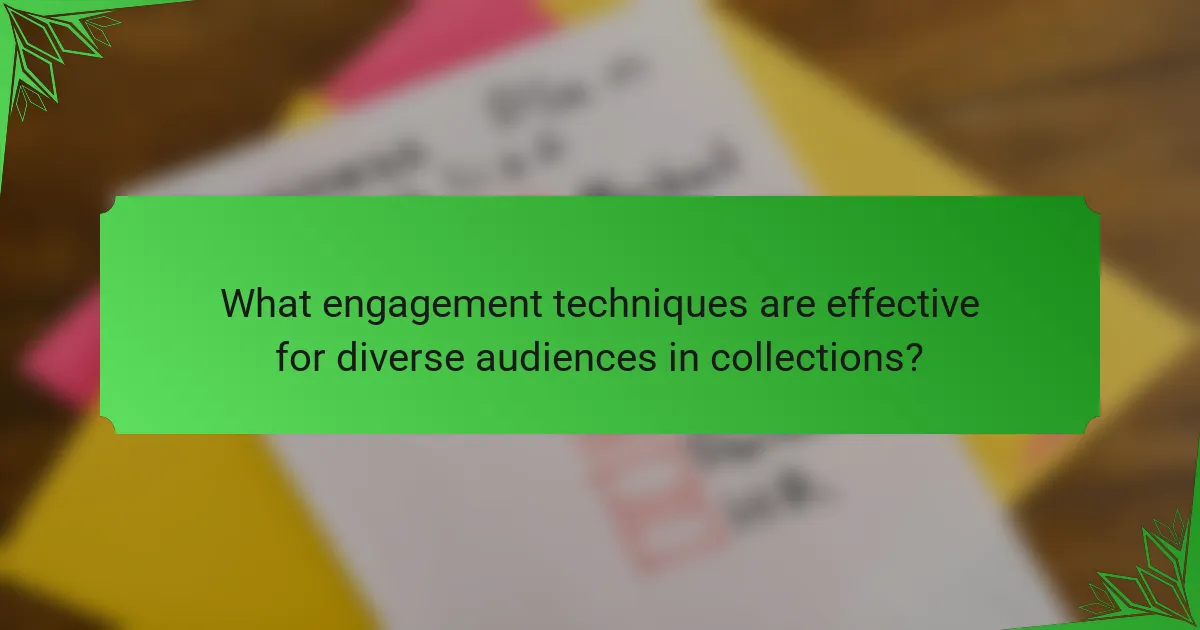
What engagement techniques are effective for diverse audiences in collections?
Effective engagement techniques for diverse audiences in collections include interactive workshops, community outreach programs, digital storytelling, social media campaigns, and collaborations with local artists. These methods foster inclusivity and enhance the connection between collections and various community segments.
Interactive workshops
Interactive workshops allow participants to engage hands-on with collections, fostering a deeper understanding and appreciation. These sessions can be tailored to different age groups and interests, making them accessible and relevant.
Consider incorporating activities such as guided discussions, artifact handling, or creative projects. Aim for workshops that last between one to three hours to maintain participant interest and energy.
Community outreach programs
Community outreach programs involve taking collections beyond traditional venues to engage with diverse populations directly. These programs can include pop-up exhibitions, school visits, or partnerships with local organizations.
Successful outreach requires understanding the specific needs and interests of the community. Tailor your programs to reflect local culture and history, ensuring they resonate with participants.
Digital storytelling
Digital storytelling utilizes multimedia tools to share narratives about collections, making them accessible to a wider audience. This technique can include videos, podcasts, or interactive online exhibits that highlight personal stories related to the collections.
Focus on creating engaging content that is easy to share on various platforms. Aim for stories that are concise, ideally between three to five minutes, to keep viewers engaged.
Social media campaigns
Social media campaigns effectively reach diverse audiences by leveraging platforms where they already engage. These campaigns can showcase collection highlights, behind-the-scenes content, or user-generated stories.
Utilize a mix of visual content, such as images and short videos, to capture attention. Regularly post and interact with followers to build a community around your collections.
Collaborations with local artists
Collaborating with local artists can enhance engagement by incorporating community perspectives into collections. Artists can create new works inspired by the collection or participate in events that draw in their audiences.
Consider hosting joint exhibitions or workshops that highlight both the collection and the artist’s work. This approach not only diversifies the audience but also enriches the cultural dialogue surrounding the collections.

How can collections trust enhance audience engagement in the UK?
Collections trust can significantly enhance audience engagement in the UK by fostering a sense of ownership and connection to local heritage. By building trust through transparency and community involvement, organizations can create more meaningful interactions with diverse audiences.
Utilizing local history
Leveraging local history allows organizations to connect with audiences on a personal level. By showcasing artifacts and narratives that resonate with the community, institutions can spark interest and pride among local residents. For example, exhibitions that highlight significant local events or figures can draw in visitors who feel a personal connection to the stories being told.
To effectively utilize local history, consider collaborating with local historians or community groups. This ensures that the narratives presented are authentic and relevant, fostering deeper engagement.
Incorporating regional art
Incorporating regional art into collections can enhance engagement by reflecting the unique cultural identity of the area. Local artists can provide fresh perspectives and interpretations of heritage, making exhibits more relatable and appealing. This approach not only supports local talent but also attracts visitors interested in contemporary expressions of tradition.
Organizations should consider hosting rotating exhibitions that feature different regional artists, allowing for a dynamic experience that keeps audiences returning. Additionally, providing opportunities for community members to participate in art creation can further strengthen connections.
Hosting cultural events
Hosting cultural events is a powerful way to engage diverse audiences by creating immersive experiences that celebrate local traditions. Events such as festivals, workshops, and performances can attract a wide range of participants, fostering community spirit and collaboration. These gatherings can also serve as platforms for dialogue and education about cultural heritage.
When planning cultural events, it’s essential to consider accessibility and inclusivity. Offering varied programming that caters to different age groups and cultural backgrounds can enhance participation. Collaborating with local organizations can also help in reaching broader audiences and ensuring the events resonate with the community’s interests.

What are the best practices for measuring engagement effectiveness?
Measuring engagement effectiveness involves using various methods to assess how well audiences connect with content or events. Best practices include gathering direct feedback, analyzing digital interactions, and tracking attendance at events to gain a comprehensive understanding of engagement levels.
Surveys and feedback forms
Surveys and feedback forms are essential tools for collecting direct insights from your audience. They can be distributed online or in-person and should include a mix of quantitative and qualitative questions to capture detailed opinions and suggestions.
Consider using a Likert scale for rating satisfaction and open-ended questions for deeper insights. Aim for a response rate of at least 20-30% to ensure the data is representative of your audience.
Analytics from digital platforms
Utilizing analytics from digital platforms helps track user interactions and engagement metrics. Key performance indicators (KPIs) such as page views, time spent on site, and social media shares provide valuable data on how content is received.
Tools like Google Analytics can help you segment your audience and understand which demographics are most engaged. Regularly reviewing these metrics allows for timely adjustments to content strategies based on audience behavior.
Attendance tracking at events
Tracking attendance at events is crucial for evaluating engagement effectiveness. This can be done through registration systems, ticket sales, or check-in processes to gather data on who attended and their demographics.
Consider using QR codes or mobile apps for easy check-in and to collect additional feedback during the event. Analyzing attendance trends over time can help identify which events resonate most with your audience, guiding future planning and resource allocation.

What criteria should be considered when selecting engagement techniques?
When selecting engagement techniques, consider factors such as audience demographics, resource availability, and alignment with collection goals. These criteria help ensure that the chosen methods effectively reach and resonate with diverse audiences.
Audience demographics
Understanding audience demographics is crucial for selecting effective engagement techniques. Factors such as age, education level, cultural background, and interests can significantly influence how different groups respond to various methods. For instance, younger audiences may prefer digital interactions, while older groups might appreciate in-person events.
Gathering demographic data can be done through surveys, social media analytics, or community feedback. This information allows organizations to tailor their approaches, ensuring that engagement techniques are relevant and appealing to specific audience segments.
Resource availability
Resource availability encompasses both financial and human resources, which are essential when implementing engagement techniques. Organizations must assess their budget, staff expertise, and time constraints to determine what methods are feasible. For example, a small museum may prioritize low-cost digital campaigns over large-scale events due to limited funding.
Additionally, consider the tools and technologies at your disposal. Investing in user-friendly platforms can enhance engagement efforts, but it is vital to ensure that the chosen resources align with your overall strategy and capabilities.
Alignment with collection goals
Engagement techniques should align with the overarching goals of the collection to maximize their effectiveness. Whether the aim is to increase awareness, drive attendance, or foster community involvement, the selected methods must support these objectives. For instance, if a collection seeks to educate the public, interactive workshops may be more suitable than passive displays.
Regularly reviewing and adjusting engagement strategies based on their alignment with collection goals can help organizations stay focused and responsive to audience needs. This practice ensures that efforts remain relevant and impactful over time.
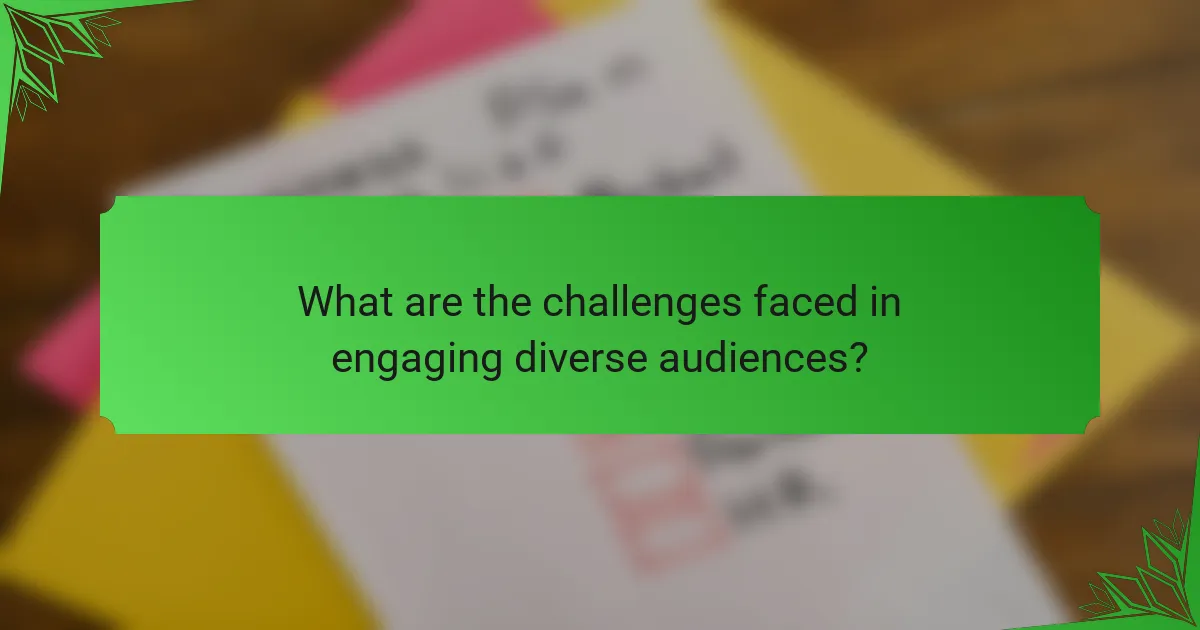
What are the challenges faced in engaging diverse audiences?
Engaging diverse audiences presents several challenges, including varying cultural backgrounds, differing accessibility needs, and the necessity for tailored communication strategies. Understanding these challenges is crucial for effectively reaching and resonating with a broad range of individuals.
Cultural sensitivity
Cultural sensitivity involves recognizing and respecting the diverse backgrounds and traditions of different audience segments. This means being aware of cultural norms, values, and communication styles that may influence how messages are received.
To engage effectively, organizations should conduct research on the cultural contexts of their audiences. For example, using imagery or language that resonates with specific cultural groups can enhance connection and trust. Avoiding stereotypes and generalizations is essential to foster a respectful dialogue.
Accessibility issues
Accessibility issues refer to the barriers that prevent individuals with disabilities from fully engaging with content or experiences. This includes visual, auditory, and cognitive impairments that may hinder participation.
To address accessibility, organizations should follow established guidelines, such as the Web Content Accessibility Guidelines (WCAG). Providing alternative text for images, captions for videos, and ensuring navigability for screen readers are practical steps. Regularly testing materials with diverse user groups can help identify and rectify accessibility shortcomings.
